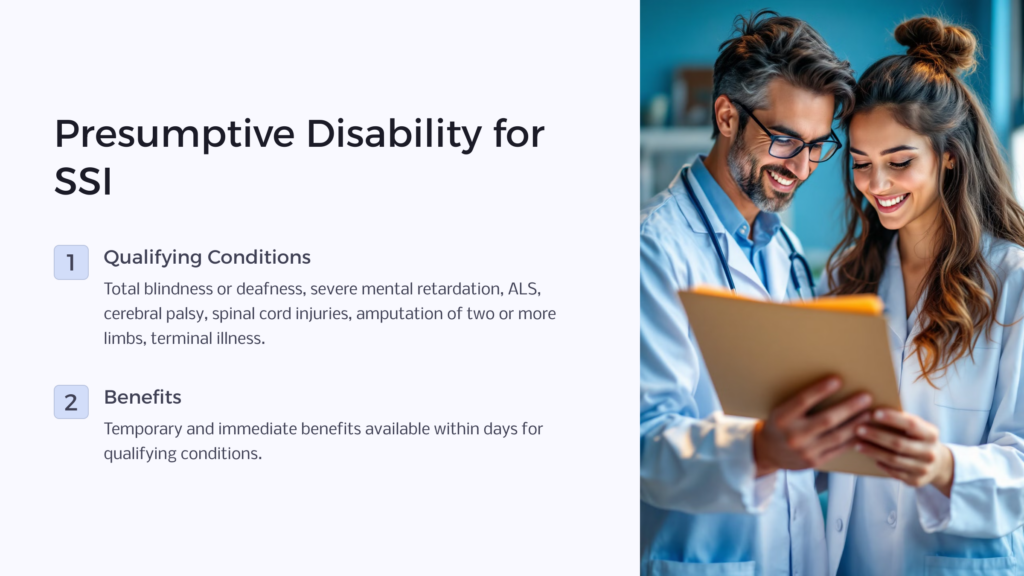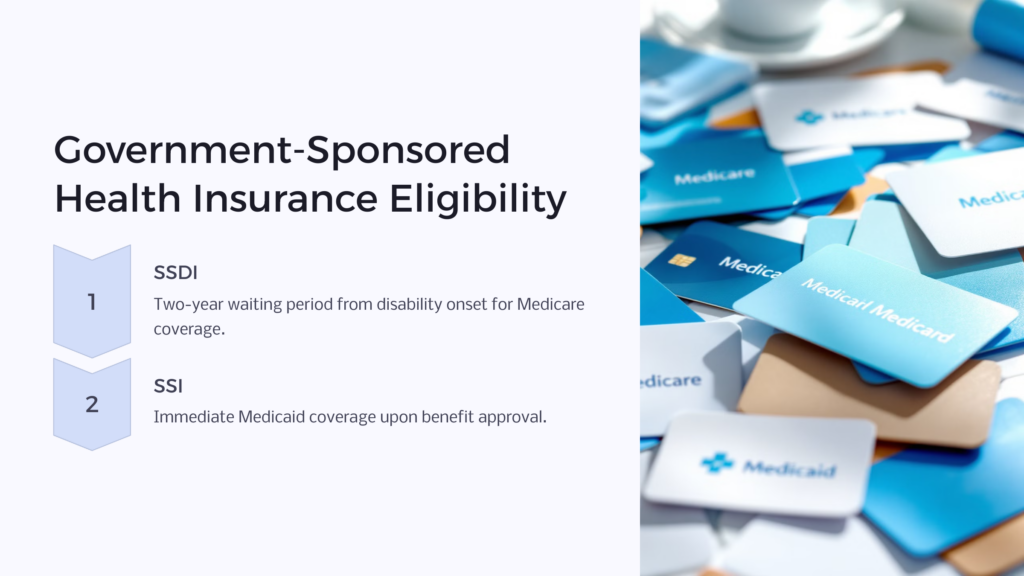To assist people who have disabling physical and mental issues, Social Security Administration (SSA) oversees two programs that provide disability benefits for those in need.
Social Security Disability Insurance (SSDI) and Supplemental Security Income (SSI) both offer much needed benefits, and while there are some similarities between the two programs, there are also many different eligibility requirements as well. Understanding what these differences are, as well as knowing what the qualifying criteria are for SSDI or SSI, can save you time and frustration if you are seeking help from Social Security.
The main difference between SSDI and SSI

SSDI pays benefits to individuals who have worked and paid Social Security taxes through payroll deductions over the course of their lifetimes and met a required minimum number of work credits. To be eligible, an applicant must have a long-term disability or medical condition that expected to last for at least one year or until they die. That disability must meet strict Social Security definitions to be eligible for benefits.
Supplemental Security Income provides disability benefits for people who are disabled but who do not qualify for SSDI, either because they have not worked and met minimum income and the payroll taxes requirement, or they are young and have not yet entered into the workforce. To qualify for SSI, it is based strictly on need and is primarily for people with very limited income who are 65 years or older and/or who have children who are disabled or blind.
Waiting periods
Aside from how individuals qualify for disability benefits, the biggest difference between the two programs is the amount of time an applicant must wait before they can start receiving payments.
Social Security Disability Insurance has a five-month waiting period from the time a person becomes disabled until the time they can start receiving benefits. Supplemental Security Income applicants have no waiting period and can start getting benefits the same month they apply.
Temporary and immediate benefits

For some Supplemental Security Income applicants, Social Security can make temporary benefits available within a matter of days through what is known as the Presumptive Disability process. Basically, Social Security will look at an applicant’s condition and pay temporary and immediate benefits if it is easy to assume that the person has a qualifying disability. Some examples of conditions that qualify may include total blindness or deafness, severe mental retardation, ALS, cerebral palsy, spinal cord injuries, the amputation of two or more limbs, or a terminal illness with less than six months left to live.
While SSDI has certain processes such as Compassionate Allowances and others that will speed the approval process, presumptive disability payments are not available for SSDI claims.
Eligibility for government sponsored health insurance

Social Security Disability Insurance recipients must wait two years from the month they became disabled to be eligible to get Medicare coverage. Supplemental Security Income recipients can get Medicaid coverage as soon as they are approved for benefits.
Payments to dependents

Social Security disability benefits may be available to the disabled individual’s dependents if there is any money left over from the claimant’s fund after they have been paid. This is because Social Security Disability Insurance has a maximum family amount that is payable based on the disabled person’s record. If there is excess money in the family maximum, then dependents can receive any remaining money.
The SSI program does not allow for dependents to be paid under any circumstances. Payments are made to the disabled person only in all circumstances.
Benefits for children

Although a child cannot collect benefits from an adult’s Supplemental Security Income claim, they can file their own disability application. To be eligible for SSI, SSA bases a child’s application on their parents’ income and assets until the child turns 18. The child’s application will need to provide educational records in addition to income, work history, medical records and history, and other supporting documents. The level of the ability of the child to function in school takes the place of the child’s ability to perform in a work setting.
Social Security Disability Insurance is a program for adults based on their work history and therefore direct benefits for children are not available under this program.
Amount of payments
The maximum monthly benefit amount for Supplemental Security Income recipients in 2023 is $914 for an individual, $1,371 for an eligible individual with an eligible spouse, and $458 for an essential person. Monthly amounts are reduced by subtracting any countable income that may have been earned. In addition to these amounts, some states do offer supplemental SSI benefits.
SSDI payments are based on average lifetime earnings and the number of work credits earned. For 2023, a recipient can max out at $3,627. The average payment in 2023 is $1,470 per month. Based on information found on a person’s Social Security statement, a disabled worker and his or her family will receive between 150% to 180% of the disabled worker’s benefit.
Payments for these disability programs are adjusted by Social Security Administration annually and determined by a COLA increase that becomes effective in January of each year.
 Benefits.com Advisors
Benefits.com Advisors
With expertise spanning local, state, and federal benefit programs, our team is dedicated to guiding individuals towards the perfect program tailored to their unique circumstances.
Rise to the top with Peak Benefits!
Join our Peak Benefits Newsletter for the latest news, resources, and offers on all things government benefits.




















